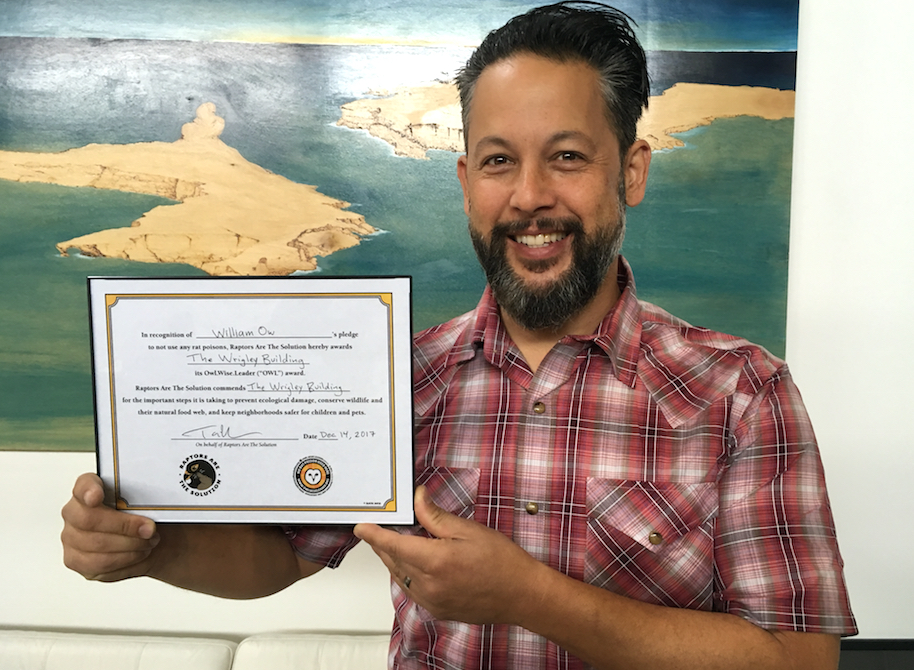(Full article from RATS Tales Winter 2017)
At over 385,000 square feet, the Wrigley Building is the largest building in Santa Cruz County. Thanks to the vision of real estate developer William Ow, who bought the rambling complex in 2004, the former chewing gum factory has become a vibrant hub for dozens of local startups, artists and artisans, as well as home to the U.S. Geological Survey’s Pacific Coastal and Marine Science Center.
Now Ow has something else to be proud of—as of November 21, the Wrigley Building is entirely poison-free.

When SCRATS contacted Ow to explain that the bait boxes around the perimeter of the building could be responsible for poisoning local wildlife, Ow didn’t waste any time. He contacted his pest control company and instructed them to swap out the poison bait for snap traps. Non-toxic rodent control measures are implemented inside and out: dumpsters are kept tightly closed, trees and landscaping are trimmed back from the building walls, and Ow is even planning to install barn owl nest boxes on the grounds, with the help of a tenant with a 3D printer. Ow and his team’s success at running a rodent-free operation defies the tired pest control industry claim that commercial buildings must use poison because the facilities are so large and difficult to seal.
Though a businessman, Ow is deeply conscious of his role as a steward of the local ecosystem. The Wrigley Building sits across the street from Antonelli Pond, a nature reserve where many species hunt and nest. He enjoys watching great blue herons stalking gophers on the lawn surrounding the Wrigley Building, and refuses to use any gopher control measure that might harm the birds. When a raccoon once fell through a skylight into the office, the bemused critter was safely herded back outdoors and the hole in the ceiling repaired.
William Ow’s pledge to use only non-toxic rodent control is poised to start a wave of positive change that could make the west side of Santa Cruz a safer place for wildlife threatened by the widespread use of rat poison. He is reaching out to neighboring businesses, encouraging them to follow the Wrigley Building’s example. “We can and will be a positive cause for change,” he declares.
